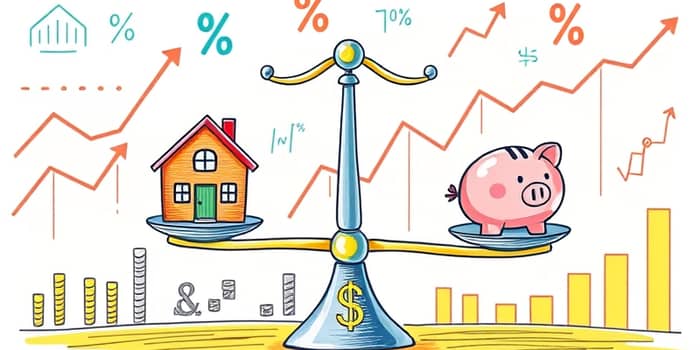
In today’s complex financial world, interest rates can feel like an unpredictable force, shaping the dreams you chase and the security you build. Whether you’re planning for a new home, a car, or growing your nest egg, understanding the mechanics behind these percentages is essential.
Interest rates represent the price of money, determining how much you’ll pay when borrowing or gain when lending. Essentially, they are the cost of borrowing or the return on funds, expressed annually as a percentage. Understanding these rates is foundational for anyone seeking to make informed financial decisions.
It’s important to grasp that these percentages underpin every loan, from a first car purchase to a home for your family. An intimate understanding of these numbers equips you to negotiate better terms and avoid surprises.
Interest rates serve multiple vital purposes. They compensate lenders for risk and inflation, reward savers, and direct the flow of credit in the economy. Lenders demand a premium to offset the chance of default and to preserve the value of their capital in an inflationary environment.
Central banks wield rates as a primary tool to nurture growth or temper inflation. In times of economic downturn, they often slash rates to encourage spending; when overheating threatens stability, they lift rates to cool demand.
For borrowers, interest rates translate directly into the monthly payments on mortgages, car loans, and personal debt. When rates rise, so does the cost of meeting those payments; when they fall, borrowers can breathe easier or refinance existing debt.
Facing a mortgage with the right rate isn't just about dollars and cents—it’s about the peace of mind that comes from predictable payments and the freedom to plan your future.
Even credit cards feel the squeeze: an $8,000 balance at 18% APR with only minimum payments can take nearly a decade to clear, accruing thousands in interest.
On the flip side, savers and investors rejoice when rates climb. High-yield savings accounts, certificates of deposit, and bonds become more attractive, boosting your passive income potential. Conversely, falling rates can squeeze income streams, prompting creative searching for yield.
When inflation outpaces returns, even a steady savings habit can feel like treading water. Shifting to higher-yield products can make a tangible difference in your nest egg's growth.
Investors must also consider the erosive impact of inflation. A nominal return of 5% can feel disappointing when inflation runs at 4%, leaving a real gain of only 1%. Bonds and fixed-income instruments generally become more appealing during periods of rising rates but can lose value if rates increase after purchase.
Beyond individual finances, interest rates are the central levers of economic policy. Low rates encourage borrowing and spending, fueling growth in housing markets, consumer retail, and business expansion. High rates, by contrast, cool demand, suppress inflation, and can slow an overheated economy.
Small business owners, homeowners, and retirees alike are at the mercy of interest rates. A local café might delay expansion when borrowing costs rise, while a retiree could find her fixed income more valuable in a high-rate climate.
Navigating a shifting rate environment demands both vigilance and flexibility. Here are practical approaches:
Empower yourself by mastering foundational terminology:
Interest rates are both a science and an art, a direct channel through which economic forces shape our daily lives. Whether you’re a borrower striving for a better rate or a saver seeking optimal returns, understanding these fundamental concepts can transform uncertainty into opportunity.
By leveraging the tools and insights outlined here, you transform the abstract world of percentages into a concrete roadmap for success. Let every rate change be not a threat but a signal—an invitation to reassess, recalibrate, and press forward with confidence.
References













